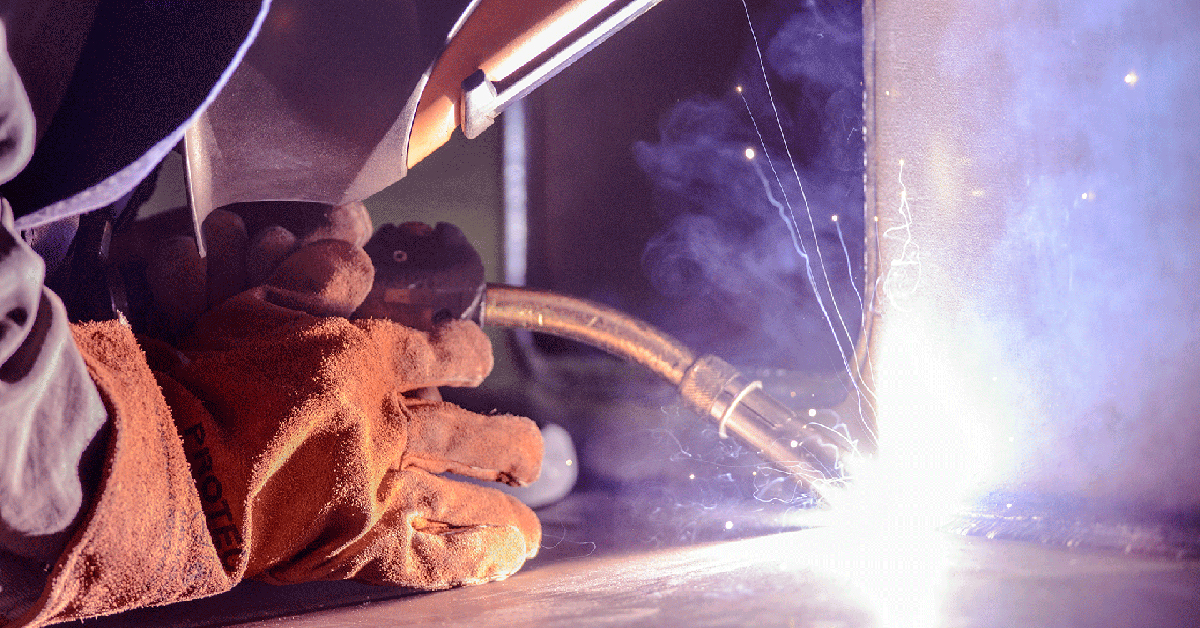Recognizing the Causes and Solutions for Undercut Welding in Metal Construction Procedures
In the world of steel construction processes, the incident of undercut welding poses a considerable obstacle that requires a comprehensive understanding of its reasons and viable remedies. The detailed interaction of different aspects during welding operations can result in this unfavorable sensation, affecting the architectural honesty and total top quality of the bonded joints - Preventing weld undercut. By studying the origin of undercut welding and exploring effective remedial measures, fabricators can boost the criterion of their handiwork and make certain the manufacturing of perfect metal components
Common Root Causes Of Undercut Welding
Regularly ignored in metal fabrication, undercut welding occurs as a result of numerous aspects that demand meticulous focus and expertise to be effectively minimized. One typical source of undercut welding is too much warm input. When the heat input is also high, it can cause the melting and subsequent disintegration of the base material along the edges of the weld joint, developing a groove or undercut. Additionally, inappropriate welding methods, such as using the incorrect welding angle or travel rate, can likewise add to undercut development. Insufficient securing gas protection is another crucial factor that can cause undercutting. Not enough gas coverage falls short to safeguard the weld swimming pool sufficiently, leading to oxidation and undercut flaws. Furthermore, the choice of welding criteria, such as voltage, current, and cord feed rate, plays a considerable duty in the occurrence of undercut welding. Comprehending these usual causes is vital for implementing precautionary actions and guaranteeing top notch welds in steel fabrication processes.
Influence of Incorrect Welding Parameters
Incorrect welding specifications can substantially endanger the integrity and quality of welded joints in metal construction processes. The effect of inaccurate welding criteria shows up in numerous means, leading to architectural weaknesses and defects in the welded components. Meticulous attention to welding parameters is critical to guarantee the production of premium welds with the preferred mechanical residential properties and architectural stability.
Impact of Improper Torch Angle
Improper lantern angle in welding operations can considerably impact the top quality and stability of the final weld joints in steel fabrication procedures. Undercutting is an usual welding flaw where a groove forms along the weld toe, weakening the joint and jeopardizing its structural honesty.
A lantern angle that is as well high can result in not enough penetration, insufficient fusion, and boosted spatter. On the various other hand, a torch angle that is also shallow can lead to too much penetration, burn-through, and distortion of the base material. Preventing weld undercut. Correct torch angle is necessary for ensuring constant weld top quality, strength, and appearance
To avoid undercutting and other flaws brought on by improper torch angles, welders have to be educated to maintain the appropriate lantern angle throughout the visit here welding procedure. Regular monitoring and modification of lantern angles throughout welding can aid achieve sound welds with very little flaws.
Duty of Inadequate Welding Methods

Another aspect of insufficient see this here welding methods is inappropriate weld prep work. Poor cleansing of the base steels, incorrect joint design, or insufficient edge preparation can all add to undercut welding. Poor securing gas insurance coverage or making use of the incorrect type of gas can result in incomplete fusion and the formation of undercut defects.
To address the role of poor welding strategies in steel construction procedures, it is important to supply thorough training for welders. Proper education and learning on welding criteria, joint prep work, and securing gas option can assist stop undercut welding and guarantee premium welds in metal fabrication tasks.
Efficient Solutions for Undercut Welding
Dealing with undercut welding in metal manufacture needs implementing effective solutions to boost weld high quality and structural honesty. One of the key options to fight undercut is to readjust welding specifications such as voltage, current, and take a trip speed to make certain appropriate warmth input and combination. By fine-tuning these settings, welders can stop excessive melting of the base steel and filler material, minimizing the possibility of undercut development.
Additionally, correct joint preparation is vital in avoiding undercut. Making certain clean base steel surfaces devoid of contaminants and utilizing the ideal bevel angle can help advertise far better weld penetration and minimize the risk of undercut - Preventing weld undercut. Utilizing ideal welding techniques, such as oscillating the lantern or weaving, can also help in dispersing warmth evenly and filling up the weld joint adequately, reducing the opportunity of undercut issues
Furthermore, choosing the right welding consumables, consisting of electrodes and filler steels, is important in alleviating undercut. Making use of products with appropriate chemical compositions and mechanical residential properties can add to achieving sound welds with minimal undercut. Regular evaluation and quality assurance actions need to additionally be implemented to spot and deal with undercut problems quickly, guaranteeing the general stability of produced metal components.

Conclusion
Finally, understanding the reasons and remedies for undercut welding in steel construction processes is important for accomplishing premium welds. By dealing with common reasons such as wrong welding specifications, incorrect torch angle, and poor welding methods, welders can avoid undercutting and ensure solid, long lasting welds. It is vital to take notice of these factors and apply check over here efficient services to boost the general welding process and end product top quality.
